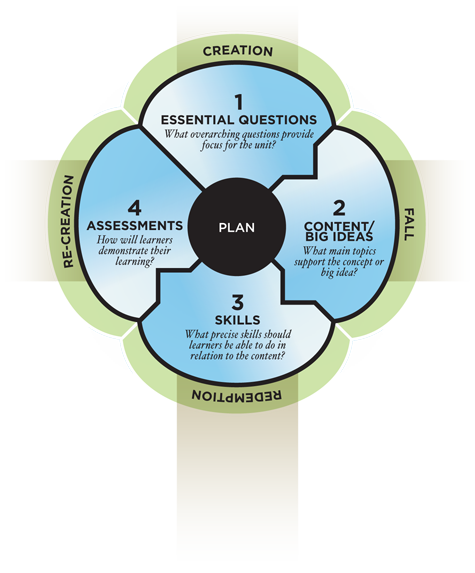Curriculum Overview
Curriculum refers to the instructional components (essential questions, content/big ideas, skills, assessments, activities, and materials) of a particular course of study. Standards, what learners should know (content) and be able to do (skills), serve as the framework for curriculum development.
The curriculum model shown here incorporates these important components. Wiggins, McTighe, Erickson, and Hayes note the significance of essential questions. Essential questions provide a focus for inquiry, problem solving, application, and creativity to promote more active engagement of learners. Evidence from both national and international research also emphasizes that teaching and learning should be more concept-based; concepts link the content and skills in a meaningful way, promoting greater understanding. Organizing the standards in relation to big ideas or concepts allows teachers and learners to “teach less, learn more.”
Curriculum mapping is a process for aligning instructional components across an educational system or a classroom. A system-wide or core curriculum map describes agreed-upon internal and external standards, which should be addressed with consistency and flexibility by the teacher while developing units and lessons. Internal standards in NAD core curriculum maps reflect the Adventist worldview across K–12 curricula, while external standards reflect the integration of national and provincial/state standards.



